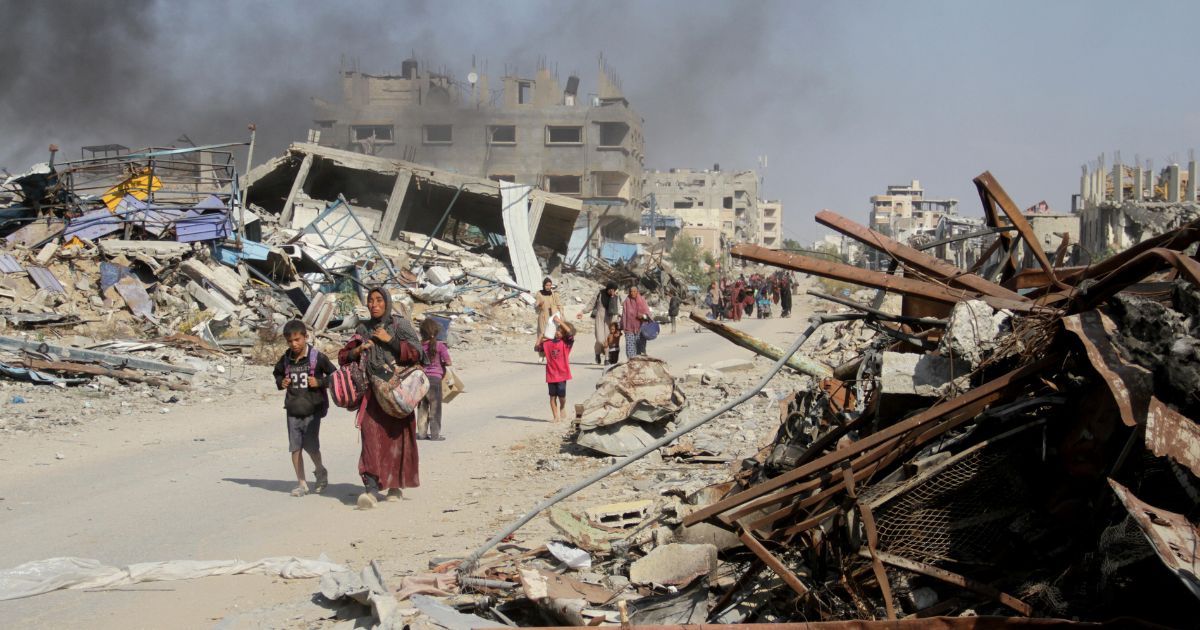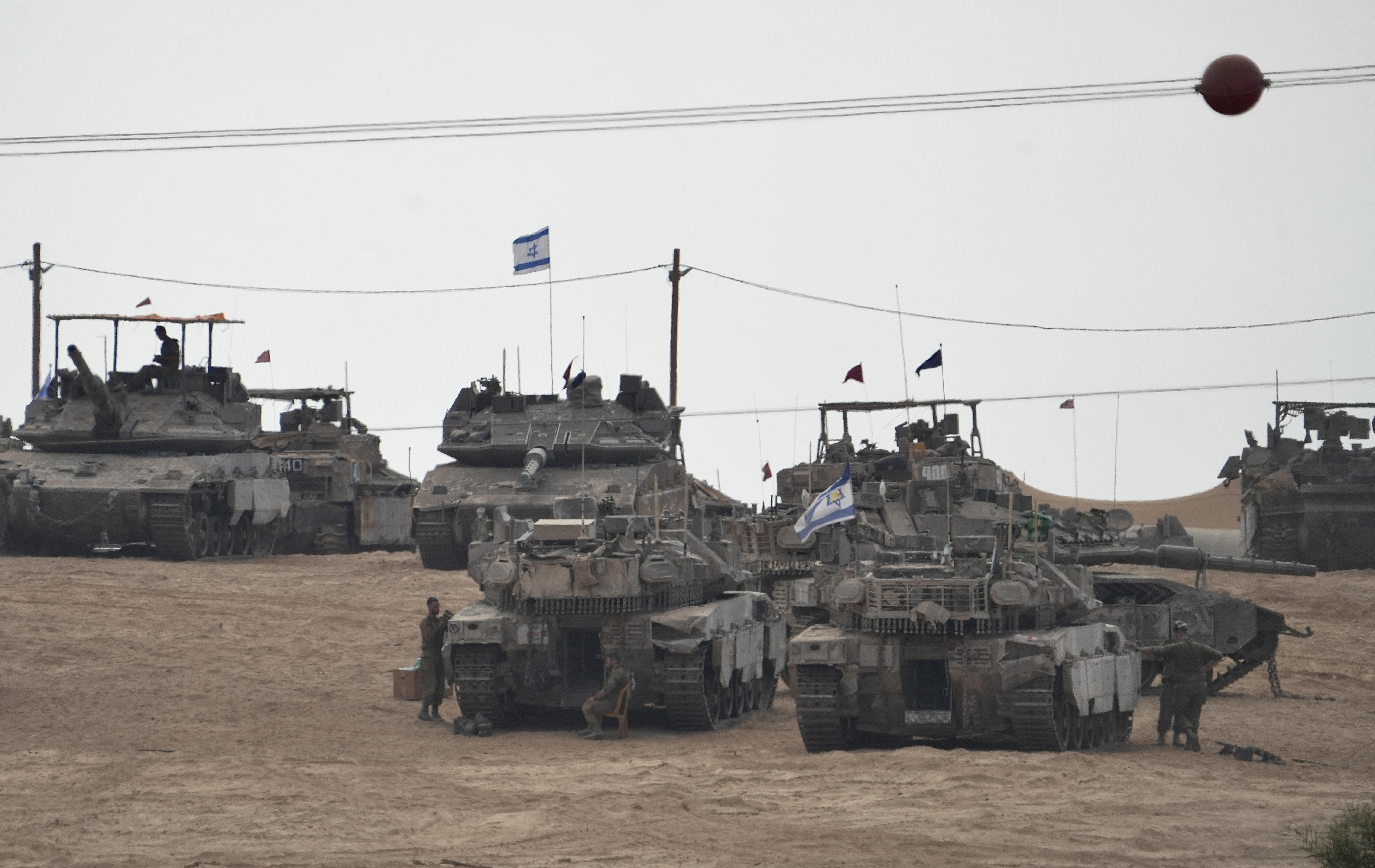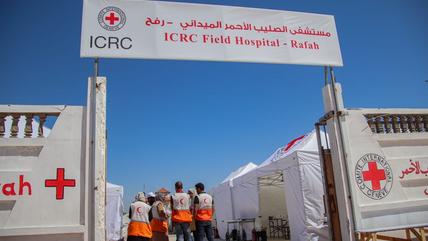"Either we survive together or we all die together"

There is no shortage of words to describe the current situation in the northern Gaza Strip. A group of UN organisations, including the World Food Programme, recently described it as "apocalyptic", writing in a joint statement that "the entire Palestinian population in North Gaza is at imminent risk of dying from disease, famine and violence". For five weeks, the northern section of the coastal strip has been besieged by Israeli troops, their tanks rolling through the towns of Beit Lahiya and Beit Hanoun, and the Jabaliya refugee camp, which has been in place since 1948 and grown into a city.
Israel is denying international journalists access to the Gaza Strip. To get a first-hand impression, the best option is now to talk to people on the ground by phone. Majda Al-Adham lives with her eight children, aged between five and 17, in her apartment in Jabaliya, despite the Israeli orders to leave the camp. Over the last year, she has already left her home on four occasions and returned each time. "No place was safe," she says.
Why doesn't she flee again now? "It's too dangerous. When I open the front door, Israeli quadcopters are flying around outside and shooting at everything. Israeli tanks are on the street behind us," she replies. Her house shakes every time the tanks roll by. Fear reigns inside the house too. "When I move from one room to another, all the children come with me. Either we survive together or we all die together."
Qatar withdraws from negotiations
The UN Office for the Coordination of Humanitarian Affairs (OCHA) recently estimated that after about a month of the siege, around 100,000 people had been displaced from the northern Gaza Strip to the south. However, up to 95,000 Palestinians are believed to still be in the northern area. According to Palestinian sources, at least 1,300 people have been killed there since the siege began.
The Israeli government considers the siege necessary to prevent Hamas fighters from regrouping in northern Gaza. Human rights groups fear that it is part of the so-called "Generals' Plan" to permanently expel people from the north of the Gaza Strip and then declare the area a closed military zone.
Every time she hears about negotiations, Al-Adham says her hopes rise. "We need a ceasefire, even if it's only for a day. Just a pause to take a breath," she says. But her hopes are unlikely to be fulfilled any time soon. Last Saturday, the Gulf emirate of Qatar announced that it was withdrawing from all mediation efforts between Hamas and Israel "until the two parties demonstrate their will and seriousness in ending the war".
"You can't imagine the destruction we see from our house; it's surreal," Al-Adham says on the phone. "Those who were killed were lucky; for them, it's over."

"We walked between tanks at the side of the road"
Al-Adham is not alone in her feelings. The phone rings for a while before Muhammad picks up. He used to teach at one of the universities in Gaza, but he does not want his full name published. He is afraid. His house in Jabaliya, like many houses in his neighbourhood, was mined and blown up by the Israeli army, he explains. He then found a supposed safe haven with his family in the Kamal Adwan Hospital in the northern city of Beit Lahiya.
On the night of 25 October, the Israeli military launched an offensive on the hospital. Muhammad was taken outside with groups of other men, including medical personnel. He was made to sit in a sand quarry. "It was surrounded by Israeli tanks. They interrogated us one by one," he says.
In the end, the men were either taken away or released. Those who were arrested on suspicion of cooperating with Hamas were taken by soldiers behind a house corner, he says. The group heard shots coming from that direction. Others were loaded onto trucks. What exactly happened to those who were taken away cannot be verified. But the photos of the men stripped to their underwear sitting in the sand was seen around the world.

Blaulicht, Gehupe und zerrissene Beine
In einem Feldkrankenhaus in Rafah versorgen palästinensische und internationale Mitarbeitende tausende Verletzte. „Es ist ein Wunder, dass ich überlebt habe“, erzählt eine Patientin, der beide Beine amputiert werden mussten.
Muhammad says he spent twelve hours there. In the end, he was allowed to go. "We walked seven kilometres, between lines of Israeli tanks at the side of the road. Most of us were barefoot," he recalls. Muhammad's ten-year-old son was there too. "Since then, it has been difficult to convince him that he is safe, even when I hold him in my arms," he says. The children have nightmares and panic attacks, and wet their beds again. Some are aggressive, others are already thinking of revenge despite their young age.
"We are leaving our land to the Israelis. Enough is enough."
Muhammad finally left North Gaza with his family. They are now living in Gaza City in a building with 125 other people – but at least he and his family have survived. "Death is the rule, not the exception. If you come out of it alive: that's the exception," he says, summarising the last few weeks.
Al-Adham has lost all hope in her apartment in Jabaliya camp. "What does the future hold? We're just waiting for death here. If they ever open the borders, we'll leave. We'll just leave our land to the Israelis. Enough is enough." Al-Adham has given up and just wants to survive. She has lost three of her brothers, their five children and her sister, she says. That is more than any human being can endure.